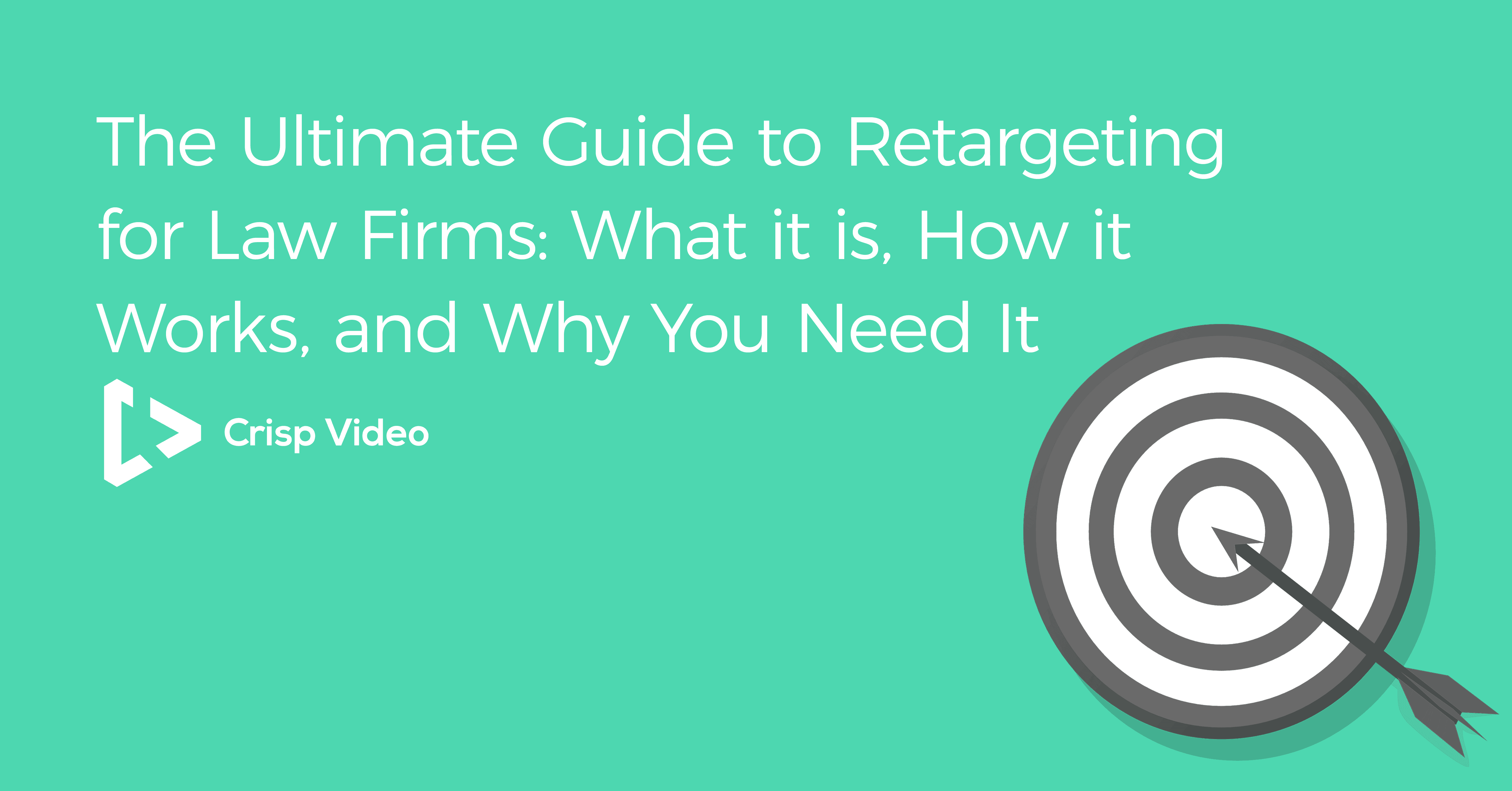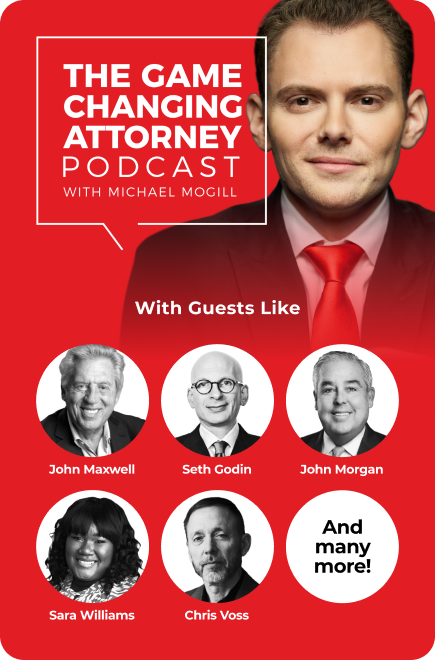The legal market is saturated — of course, that’s probably no surprise to you, the attorney reading this.
In order to beat out your competitors, you are tasked with maintaining a level of top-of-mind awareness with your ideal clients so when they are in need of your services, they think to call you before anyone else.
But how do you do that?
Well, for starters, a robust digital marketing strategy is a must — but within that strategy, it is vital that you take advantage of a powerful tactic that makes it possible for you to continuously stay in front of your target audience online: retargeting.
In this article, we’ll be exploring the ins and outs of retargeting and answering the questions:
- What is retargeting?
- Why is retargeting important?
- How does retargeting work?
- How do I integrate retargeting into my own marketing strategy?
For exclusive access to the most cutting-edge insights in legal marketing, law firm growth, and building a game changing team, don’t miss the EVOLVE Virtual Summit on June 24-25, 2021! Most virtual events suck — but the EVOLVE Summit isn’t like most virtual events.
It’s The Ultimate Virtual Experience for Entrepreneurial Law Firms and their teams. If you want to be part of shaping the future of the legal industry, this is the event for you.
What is Retargeting?
By definition, retargeting is a form of online advertising by which online advertising is targeted to consumers based on their previous internet actions. Retargeting “tags” online users by including a pixel within the target webpage or email, which sets a cookie in the user’s browser.
Retargeting is a great tool to continue nurturing people who have engaged with your messaging and/or visited your website, due to the fact that these people have some level of familiarity with you and thus can be continuously hit with your ads to strengthen that relationship and stay top-of-mind.
Technically speaking, adding a bit of code called a pixel to your website allows you to capture visitor information, such as what they like to browse and the ads they’ve previously clicked on.
In return, once a user visits your site or clicks on your ads, they will receive a cookie (no, not that kind of cookie), which is information stored on the user’s computer by a website so preferences are remembered on future requests.
This lets you follow those users around the internet, targeting them over and over (ahem, re-targeting) with your content after they leave your site (and hopefully bringing them back again!).
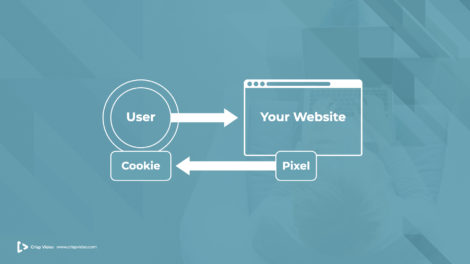
A Real-Life Retargeting Example
The easiest way to explain retargeting is a real-life example that you’ve probably experienced at some point or another on the web.
Imagine you’re shopping for a sweater online. You do a typical Google search, browse for a while, and eventually, add one to your cart on Amazon. However, for some reason or another, you decide to hold off on the purchase and exit the webpage.
But then, something strange happens…that same sweater you almost purchased the day before is now the star of every single online ad you see, whether you’re checking the weather, reading an article, watching a YouTube video, or what have you. It’s always there, following your digital breadcrumb trail with a Hansel and Gretel-Esque sensibility, waiting for you to revisit and make that purchase.
Essentially, when you visited Amazon and expressed interest in a sweater on their site, their pixel gave your browser a cookie that allowed them to include you in their target audience from then on.
That’s retargeting.
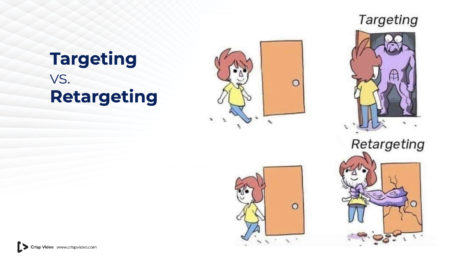
Now, let’s take it a step further in a way that applies to your law firm.
Let’s say you’re advertising online for your personal injury firm on Facebook. Someone within your target audience sees your ad, clicks on it, and is then redirected to your website.
From that moment on, because they expressed interest in your law firm’s ad, they are added to your retargeting audience and will be targeted with your ads multiple times across the internet. You do this to continue nurturing them until they are ready to make a purchasing decision, or in this case, become a client.
In doing this, your retargeting ads are creating multiple touchpoints to build familiarity with your law firm (brand awareness) and making it easier for that person in your audience to recall your firm when they suffer from an injury and are in need of your services.
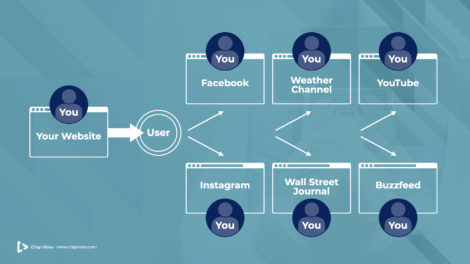
Recap: What is Retargeting?
Essentially, incorporating retargeting into your law firm’s marketing strategy can help you:
- Stay top-of-mind with your target audience — wherever they go online
- Continue building relationships as users become more familiar with your brand
- Nurture prospects into leads into clients more strategically
Why is Retargeting Important?
Now that we’ve established what retargeting is exactly, we’ll dive into why this digital marketing tool is so indispensable.
Once upon a time, the path a prospective client would take was simple. They’d see your ad, click it, and become a client — pretty easy, right?

However, now the decision-making process is much more complicated. Instead of a one-stop-shop approach, a potential client needs multiple touchpoints with a brand before making a buying decision.
The buyer’s journey has morphed into more of a “long game” approach that looks something like this:

First, they’d see a video from you on Facebook. Next, they’d be retargeted with one of your ads on YouTube and then another as you’re reading an article on The Wall Street Journal website. After that, they’d drive by a billboard of you, and maybe even hear your ad on the radio. Then, when they actually have a need for an attorney, they’d remember you and Google your firm’s name. Finally, they’d reach out to set an appointment.
Achieve Effective Frequency with Retargeting
In today’s legal landscape, direct response advertising is being replaced in large part by omnichannel, value-driven marketing designed to forge longer-term relationships and generate real trust between you and the consumers you are targeting.
Potential clients now require many touchpoints through a variety of mediums over time before they come to know you, like you, and trust you to handle their case.
In marketing jargon, this is known as effective frequency.
You’re probably wondering, “Well, how many times does my ideal client need to be exposed to my ads before achieving ‘effective frequency?’”
Studies show that 5-9 exposures are deemed to be the optimal number of times to achieve brand awareness, and 10+ exposures are required to actually drive purchase intent.
However, it is important to keep in mind that in the legal industry, these numbers are usually much higher. Why? The majority of the people in your target audience are most likely not in need of your services at the time they are exposed to your ads.
For example, if you are a divorce attorney, the ideal client you’re targeting is most likely just going about their daily life, unaware they’ve got a looming divorce in their future. However, the moment they or a loved one is suddenly facing the stress of an ending marriage, they suddenly need a divorce attorney — that’s where you come in.
Another reason why the number of exposures is so much more is that your target audience requires a higher level of trust before hiring an attorney, as opposed to, say, buying a sweater.
Targeting the 97%
Now, let’s dive in further. Let’s assume that even 3% of people in your target market are actively searching for a lawyer right now.
In other words, this tiny percentage of people are further along their decision-making journey. They have a legal need, they know they need to hire a lawyer, and they are looking into their options to make sure they make the right choice.
No doubt, you need to be on the radar of this 3% — make sure they know who you are, they have a sense of what makes you different from your competition, and they have evidence that you are the best choice for them.
But what about the other 97% of your market? Do you just ignore them to focus on the 3% that need your legal services right now?
Here’s the thing: while 97% of consumers have no need for a lawyer right now, 97% is a huge portion of the market — almost all of it, in fact.
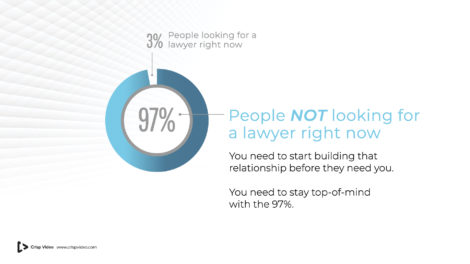
Not to mention, that 3% that is ready to hire you today needs to know you, like you, and trust you before they are actually looking for an attorney.
So what do you do? Start building that relationship ahead of time by nurturing the 97% through — you guessed it — retargeting.
Brand Loyalty is More Important Than Ever
As you read this, you may be thinking, “How do I know this is all true? Is building brand awareness and nurturing my audience over time through retargeting really that important to my marketing success?”
Don’t take our word for it — there’s lots of research to back it up.
Studies show that 70% of people say the biggest determiner of who they click in search results is whether they’ve heard of you before.
In fact, a potential client who searches your law firm by name, as opposed to something like “personal injury lawyer near me,” is twice as likely to convert because they’ve heard of you, they know you, and they have been nurtured to the point where they trust you enough to seek you out specifically.
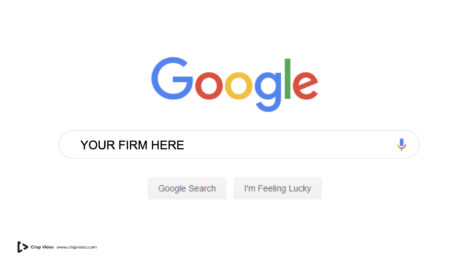
A search like that, fueled by brand awareness, means that person has already made their decision.
They have higher purchase intent, and because you’ve effectively marketed to them well before they had a legal need — establishing brand equity and brand recognition — you won’t have to compete at the bottom of the funnel.
They’ll already know who they’re looking for.
How Does Retargeting Work?
If you’ve ever visited our website, you’ve probably seen our ads elsewhere on the web.
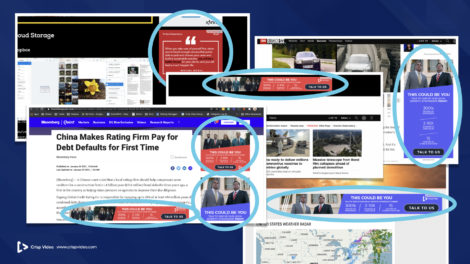
That’s not by mistake, though.
When you visited our website, our pixel (remember that term?) took note that you showed interest in us and added you to our retargeting audience so we can continuously remind you of who we are, what we do, and why you need us.
Building Your Retargeting Audience
In large part, a pixel’s value (and the point of retargeting on popular sites like Facebook) is in building different audiences for your messaging.
The key to effective retargeting is to build audiences based on user behavior and then continue serving relevant content to those audiences.
(Note: For the explanations below, we will be pulling from Facebook Ads Manager, as it is the most popular digital advertising platform. However, your retargeting strategy should be based on what works for you — who’s in your ideal audience, which platforms they spend their time on, etc.)
Creating Interest-Based Audiences on Facebook
When you create an ad campaign on a major advertising platform such as Facebook, you can build interest-based audiences (known as Core Audiences in Facebook Ads Manager) based on the demographics, interests, behaviors, location, etcetera of your target audience.

Now, when determining your own target audience, you want to ask yourself this: if I could bring on the perfect new client, what would they look like?
To help you zero in on your ideal client buyer persona, turn to page 4 of our handy downloadable resource, The Ultimate Content Planner for Attorneys.
Creating Custom Audiences on Facebook
Along with interest-based audiences, you also have the option to create custom audiences on your digital advertising platform.
This can be done on Facebook by uploading an existing contact list, or by implementing a tracking pixel on your website — thus telling us that this user has visited your site and interacted with your content there, so we can continue building that relationship with more detailed information, resources, and content elsewhere on the web.
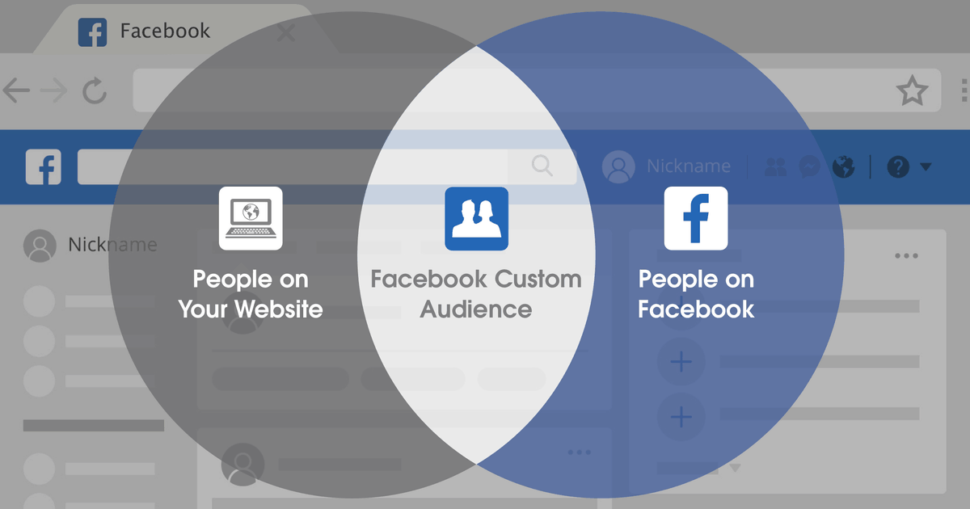
You can also build custom audiences right on the advertising platforms themselves.

For example, advertising on Facebook and Instagram allows you to create audiences based on which campaigns users have interacted with.
So, if someone watches a video ad about your law firm’s medical malpractice practice area, you can add them to a retargeting audience based on that interest and provide them content specifically tailored to medical malpractice education and eventually, conversion or lead generation ads related to medical malpractice claims.
Another example could be a user clicking on your ad for a blog post you wrote about father’s rights in custody cases in your state. You can then add them to an audience that provides more resources that align with that messaging while excluding them from other content you might be running that targets mothers or other guardians (in other words, content not targeted at this user).
Creating Lookalike Audiences on Facebook
Finally, you can also target your ads based on lookalike audiences.
These are made up of users whose interests and features are similar to those of your best clients. This determination is made based on a source audience or a custom audience that you have previously created.
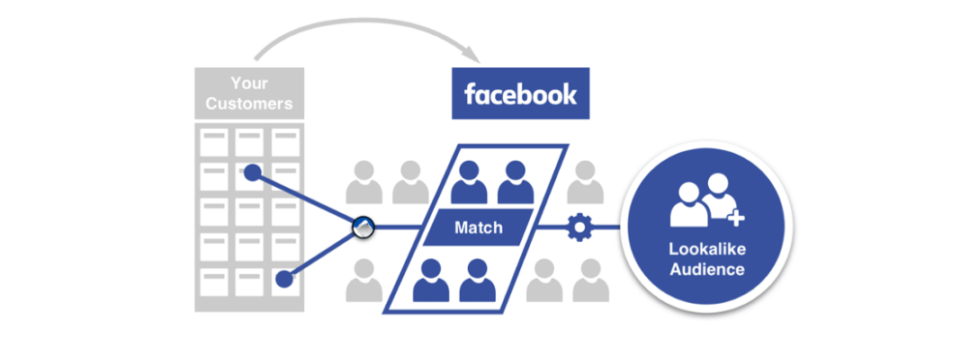
Essentially, a lookalike audience is created by taking the information from a previously run campaign that was targeted to any of the other custom audience types.
Using this information, Facebook can identify the common qualities of the people in this audience (such as demographic information or interests) and find similar users for your lookalike audience.
How Do I Integrate Retargeting Into My Law Firm’s Marketing Strategy?
If you’ve made it this far, you’re probably pretty serious about adding retargeting to your law firm’s marketing toolbox.
To give you a sense of what this looks like in practice, we’ve included a Sample Retargeting Roadmap below that demonstrates how retargeting can be used to build audiences and then continue serving that audience with relevant content that will nurture them toward eventual conversion.

In order to help you gain a better understanding of this roadmap, we’ve broken down each main pillar in detail below.
Explaining Interest-Based Audiences
Your interest-based audience is going to be those who are at the top of the marketing funnel, otherwise known as your “cold audience.”
These people may not have ever heard of your law firm — however, they fall into the parameters you set as your ideal audience. In other words, they match the demographics, location, interests, and behaviors of the clients you’d like to reach.
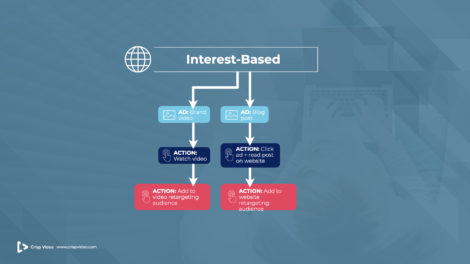
We’d suggest showing them a unique brand video to differentiate your firm and create an emotional connection and/or your best, most valuable blog post on a helpful topic.
It’s important to note that this kind of brand content should run to all audiences at all levels of the funnel.
Remember, everything performs better when it is built on a foundation of continuous brand awareness.
If they have already been seeing your content everywhere and they already know you/trust you when they receive your email or your direct mail piece or see your billboard or your TV commercial, they are much more likely to act than if they had never heard of you before.
So, from here, once someone in the interest-based audience views your brand video or clicks on your ad that redirects, they will be put into either your website or video retargeting audiences.
Explaining Website Retargeting Audiences
The next audience we’ll focus on in the retargeting roadmap above is the website retargeting audience. These are people who either started in your interest-based ideal audience and visited your website via one of your ads, or people who organically visited your site.
Basically, regardless of whether or not they’ve seen your ads or not if they’ve visited your website, they are put in this audience.
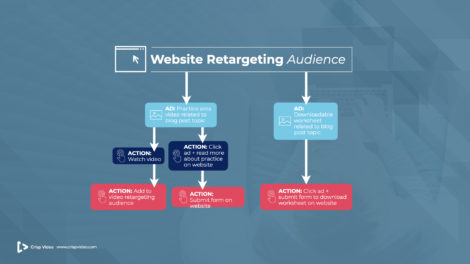
The users in this audience are a little more familiar with your law firm’s brand because they have visited your website, so they are primed to continue through the buyer’s journey and receive more of your messaging via retargeting ads.
With this audience, you’re now able to get more specific with the content you target them with. In addition to targeting them with a general brand video or blog post, you can opt to run ads based on a certain page they’ve clicked while browsing your site — this can be a practice area-specific eBook, an attorney profile video, or a different blog post.
Explaining Video Retargeting Audiences
Similar to the website retargeting audience, this audience is made up of people who have expressed interest in your brand by watching one of your video ads.
So, if someone you’re targeting in your interest-based audience views a video ad you’re running for 3 or more seconds, they will be added to your video retargeting audience.
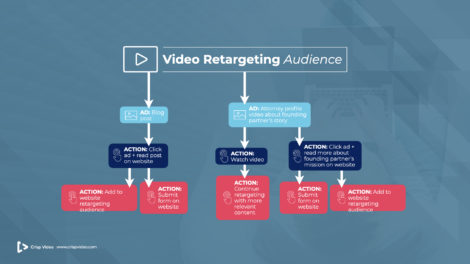
These people are also in the “warm” audience stage of the marketing funnel that houses the website retargeting audience. They’ve interacted with your videos, meaning you can retarget them with more content that can lead them closer to submitting a form on your website or giving you a call.
Ideally, you will be hitting them over and over again to give them those vital touchpoints that help build your frequency, as well as brand awareness and recall.
Final Thoughts
By now, you should have a pretty good grasp of how retargeting works to help your law firm better reach its ideal clients. When it comes down to it, what works for your firm’s retargeting strategy may look completely different from what works for your competitor down the street.
Your best weapon is to test until you discover your secret sauce for market domination.
You don’t have to do it alone, though. After all, you’ve got a law firm to run! Let us take the reins and handle your social media marketing. Find out how we can help by clicking here to learn about our Social Stack program.
For exclusive access to the most cutting-edge insights in legal marketing, law firm growth, and building a game changing team, don’t miss the EVOLVE Virtual Summit on June 24-25, 2021! Most virtual events suck — but the EVOLVE Summit isn’t like most virtual events.
It’s The Ultimate Virtual Experience for Entrepreneurial Law Firms and their teams. If you want to be part of shaping the future of the legal industry, this is the event for you.

